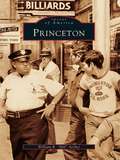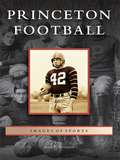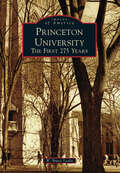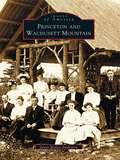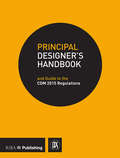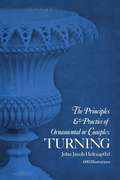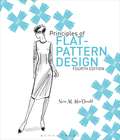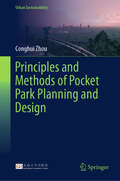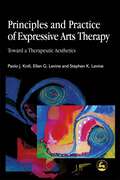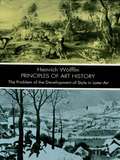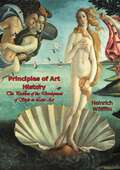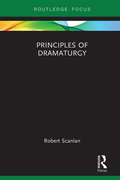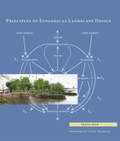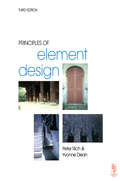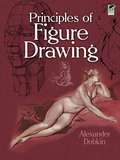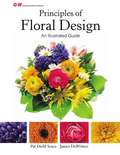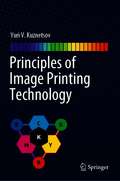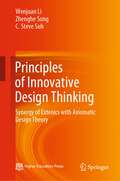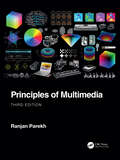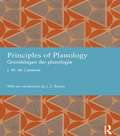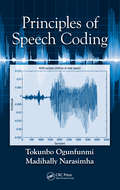- Table View
- List View
Princeton
by William R. ArcherThroughout its existence, Princeton has been a community at a unique three-way intersection connecting the heart of the Allegheny Mountain range with the fertile Valley of the Virginias to the east and the Cumberland Gap to the west. In 1837, the Virginia General Assembly formed Mercer County, named in memory of Revolutionary War general Hugh Mercer; at the same time, the county's seat was named in honor of the Battle of Princeton, New Jersey, the 1777 battle in which General Mercer died. Twenty-five years after the county's formation, retreating Confederate soldiers burned the homes of the town of Princeton to the ground. The coming of the Virginian Railroad in the first decade of the 20th century and the construction of the West Virginia Turnpike 40 years later transformed Princeton from a remote rural outpost into a vibrant center of commerce and ultimately led to the evolution of Princeton into a true crossroads for the region.
Princeton Football (Images of Sports)
by Mark F. BernsteinPrinceton played the first intercollegiate football game in 1869 and, since then, has gone on to win 28 national championships and nine Ivy League titles. Over the last 140 years, Princeton's Tigers have produced a Heisman Trophy winner, scores of All-Americans, and some of the game's greatest legends. From soldier of fortune Johnny Poe to tragic hero Hobey Baker to Charlie Gogolak, one of the first soccer-style kickers, Princeton Football captures the players, coaches, games, and stadiums that have made the Tigers one of the most storied programs in all of college football.
Princeton University: The First 275 Years (Images of America)
by W. Bruce LesliePrinceton is only the fourth American college to celebrate a 275th anniversary. Founded in 1746 as the College of New Jersey, it has long Presbyterian roots. The scene of notable events in the American Revolution, it was a classical college for another century. Then, at its 1896 sesquicentennial, it became Princeton University and in succeeding decades developed into a world-leading research university. Long an institution of males of European descent, its gender and ethnic makeup has changed dramatically in the last half-century. Today's Princeton combines a robust collegiate culture with a research profile near the top of international league tables--truly a rare combination.
Princeton and Wachusett Mountain (Images of America)
by Joyce Bailey AndersonIn 1632, after climbing up the face of a boulder near present-day Waltham and facing west toward Neipnett, Gov. John Winthrop sighted Wachusett Mountain rising against the setting sun. However, the idea of a town did not take hold until 1742, when the first settler, Joshua Wilder, arrived from Lancaster and established a tavern. By the mid-1800s, magnificent hotels and guesthouses dotted Princeton's landscape. Princeton and Wachusett Mountain shows the early days of tourism when visitors from Boston, New York, and Philadelphia rode stagecoaches to relax in the shade, play croquet on the common, and breathe country air. The village of East Princeton, meanwhile, flourished differently-chair factories used a fast-moving stream to run machines, and farmers worked the fields. Village life was simple and focused on family and the earth.
Principal Designer's Handbook: Guide to the CDM Regulations 2015
by Association for Project SafetyThe new CDM regulations came into force on 6th April 2015 changing the face of pre-construction health and safety management on construction projects, large and small. This handbook provides a comprehensive road map to undertaking the new Principal Designer role brings pre-construction health and safety risk management into the hands of architects and other designers. Offering authoritative and straightforward guidance to carrying out these tasks, it also uses case studies and checklists to demonstrate how this can be done quickly and efficiently.
Principals Matter: A Guide to School, Family, and Community Partnerships
by Mavis G. Sanders Steven B. SheldonResearch has shown that strong principal leadership is critical to developing effective school partnerships that include diverse school, family and community members. This book provides administrators with a clear road map for initiating partnership programs that are goal-focused, equitable, and sustainable.In this research-based resource, the authors highlight the work of principals who have cultivated successful partnerships across many settings to show other school leaders how they can develop the necessary supportive school cultures. Examining the administrator's role in the success and quality of home-school partnerships and student outcomes, this guidebook: Synthesizes research on principal leadership, school and community partnerships, and urban education reform Discusses the role of fathers in children’s learning and working with families that live in poverty, are linguistically diverse, or have children with disabilities Offers practical recommendations for evaluating and refining partnership programs to ensure they are linked with student achievement goals
Principle, Design and Optimization of Air Balancing Methods for the Multi-zone Ventilation Systems in Low Carbon Green Buildings
by Xin Zhang Wen-Jian Cai Can Cui Hui Cai Gang JingThis book presents a systematic study on the air balancing technologies in heating, ventilation and air conditioning (HVAC) systems. Several modern air balancing methods, including advanced control-based air balancing, data-driven-based air balancing, and energy-saving-oriented air balancing, are introduced in this book to balance the air duct system. Furthermore, this book provides clear instructions for both HVAC designers and engineers, as well as researchers, on how to design and balance duct systems for improved performance and energy efficiency.
Principles & Practice of Ornamental or Complex Turning (Dover Woodworking)
by John Jacob HoltzapffelThe ornamental or complex lathe, with its infinite capability for shaping and decorating, was perfected by the Holtzapffel family of London between 1780 and 1914. This amazing machine makes use of a broad range of attached tools, engineering works of art in themselves, to turn hardwood -- and, at the time, ivory -- into an astonishing variety of intricate patterns.Besides designing the lathe, Charles Holtzapffel and his son, John Jacob -- successful engineers, businessmen, and manufacturers -- also wrote the five-volume bible of this particular art: Turning and Mechanical Manipulation on the Lathe. This book reprints the fifth volume of this enormous work, making this definitive and extremely rare book available to modern devotees of this most demanding and satisfying craft.Featuring over 600 line drawings and detailed instructions, the twelve chapters of the text are organized according to the various cutting frames and chucks, describing and illustrating the enormous powers of each. Combinations of chucks for compound eccentric turning, spiral turning, and reciprocated work are also described in detail.The approach throughout is thoroughly practical and nothing is omitted that may be of use to the beginner or advanced ornamental turner.
Principles Of Flat Pattern Design
by Nora M. MacDonaldThe basic principles of the flat-pattern method are the foundation of producing effective apparel designs. Principles of Flat-Pattern Design, 4th Edition, maintains its simple and straightforward presentation of flat-patternmaking principles which is proven to be less intimidating for beginning students. Numbered and fully illustrated steps guide students through a logical series of pattern manipulation procedures, each beginning with a flat sketch of the design to be developed and ending with a representation of the completed pattern. A significant expansion of the introductory chapters in this 4th Edition aligns the patternmaking process with current industry practices, including technological advancements, design analysis, and production basics such as grading, marker making, and specifications.
Principles and Methods of Pocket Park Planning and Design (Urban Sustainability)
by Conghui ZhouThis book focuses on the planning and design methods of pocket parks in the disciplines of urban planning and landscape architecture. It fills the gap in the current pocket park planning by innovatively exploring the service mechanism and planning methods of the pocket parks to alleviate the scarcity of outdoor recreational spaces in the high-density environments. This book integrates the results of previous research and our latest research results. Taking urban renewal as the planning scenario, the book systematically introduces the basic characteristics of mini-parks, planning principles and methods, and development promotion and assurance strategies. This book is used as a textbook for planning and design courses, as well as a professional reference book for urban planners and landscape architects. The authors have also made great efforts to use simple language and a large number of visual illustrations in the text. Through these approaches, the authors expected that the publication of this book would not only facilitate teaching and practical application, but also attract more interest and attention from ordinary people, and motivate them to actively participate in the planning, design, and management of mini-parks around them. Only when this goal is achieved, can the original value of mini-park development be finally realized.
Principles and Practice of Expressive Arts Therapy: Toward a Therapeutic Aesthetics
by Ellen Levine Paolo Knill Stephen K LevineChallenging traditional therapeutic approaches to the arts in which art is often secondary to a psychological model, Principles and Practice of Expressive Arts Therapy provides a coherent theoretical framework for an expressive arts therapy practice that places the process of art-making and the art work itself at the center. This book lays the philosophical foundation for a fresh interpretation of art-making and the therapeutic process by re-examining the concept of poiesis. The authors clarify the methodology and theory of practice with a focus on intermodal therapy, crystallization theory and polyaesthetics, and give guidance on the didactics of acquiring practical skills. Case studies of clinical practice and guidance on supervision and training in intermodal expressive arts therapy complement the theoretical chapters. Combining philosophy, theory and practice, this book is an essential text for students and academics in the field and for practicing expressive and specialized arts therapists.
Principles of Art History
by Heinrich WölfflinOriginally published in Germany during the 1920s, this now-classic study surveys the works of 64 major artists in terms of style, quality, and mode of representation. A brilliant contribution to the methodology or art criticism, it features 120 black-and-white illustrations of works by Botticelli, Durer, Holbein, Rembrandt, Velasquez, Vermeer, and others.
Principles of Art History: The Problem of the Development of Style in Later Art
by Heinrich Wölfflin“What are the fundamental differences between classic and baroque art? Is there a pattern underlying the seemingly helter-skelter development of art in different cultures and at different times? What causes our entirely different reactions to precisely the same painting or to the same painter?In this now-classic treatise, published originally in Germany in the early 1920s, Professor Wölfflin provides an objective set of criteria to answer these and related questions. Examining such factors as style, quality, and mode of representation in terms of five opposed dynamisms (the linear vs. painterly, plane vs. recession, closed vs. open form, multiplicity vs. unity, and clearness vs. unclearness), the author analyzes the work of 64 major artists, delving even into sculpture and architecture. 150 illustrations of the work of Botticelli, van Cleve, Durer, Holbein, Brueghel, Bouts, Hals, Rembrandt, Velasquez, Titian, Vermeer, and other major figures accompany Professor Wölfflin's brilliant contributions to the methodology of art criticism.Whether you teach art, study it, or want to understand it purely for your own enjoyment, this epoch-making study will certainly increase your comprehension of and pleasure in the world's art heritage.”-Print ed.
Principles of Dramaturgy (Focus on Dramaturgy)
by Robert ScanlanIn Principles of Dramaturgy, Robert Scanlan explains the invariant principles behind the construction of stage and performance events of any style or modality. This book contains all that is essential for training a professional stage director and/or dramaturg, including the "plot-bead" technique for analyzing play scripts developed by Scanlan. It details all the steps for the full implementation of "Production Dramaturgy" as it is practiced in professional theatres, and treats form and action as foundational cornerstones of all performance, rather than "story" elements – a frequent and debilitating misprision in theatre practice. Scanlan’s unique approach offers practical training that is supported by detailed diagrams and contextualized instructions, making this the missing text for classes in dramaturgy. Serving stage directors, dramaturgs, actors, designers, and playwrights, Principles of Dramaturgy is a comprehensive guide that puts the training of capable practitioners above all else.
Principles of Ecological Landscape Design
by Travis Beck Carol FranklinToday, there is a growing demand for designed landscapes--from public parks to backyards--to be not only beautiful and functional, but also sustainable. Sustainability means more than just saving energy and resources. It requires integrating the landscapes we design with ecological systems. With Principles of Ecological Landscape Design, Travis Beck gives professionals and students the first book to translate the science of ecology into design practice. This groundbreaking work explains key ecological concepts and their application to the design and management of sustainable landscapes. It covers biogeography and plant selection, assembling plant communities, competition and coexistence, designing ecosystems, materials cycling and soil ecology, plant-animal interactions, biodiversity and stability, disturbance and succession, landscape ecology, and global change. Beck draws on real world cases where professionals have put ecological principles to use in the built landscape. The demand for this information is rising as professional associations like the American Society of Landscape Architects adopt new sustainability guidelines (SITES). But the need goes beyond certifications and rules. For constructed landscapes to perform as we need them to, we must get their underlying ecology right. Principles of Ecological Landscape Design provides the tools to do just that.
Principles of Ecological Landscape Design
by Travis BeckToday, there is a growing demand for designed landscapes--from public parks to backyards--to be not only beautiful and functional, but also sustainable. With Principles of Ecological Landscape Design, Travis Beck gives professionals and students the first book to translate the science of ecology into design practice. This groundbreaking work explains key ecological concepts and their application to the design and management of sustainable landscapes. It covers topics from biogeography and plant selection to global change. Beck draws on real world cases where professionals have put ecological principles to use in the built landscape. For constructed landscapes to perform as we need them to, we must get their underlying ecology right. Principles of Ecological Landscape Design provides the tools to do just that.
Principles of Element Design
by Yvonne Dean Peter RichThe construction of buildings is learnt through experience and the inheritance of a tradition in forming buildings over several thousand years. Successful construction learns from this experience which becomes embodied in principles of application. Though materials and techniques change, various elements have to perform the same function. 'Principles of Element Design' identifies all the relevant elements and then breaks these elements down into all their basic constituents, making it possible for students to fully understand the given theory and principles behind each part. As all building projects are subject to guidance through the Building Regulations and British Standards, this book gives an immediate reference back to relevant information to help practitioners and contractors identify key documents needed.Yvonne Dean B.A. (Hons) B.A (Open) RIBA, an architect, energy consultant and materials technologist. She also has 15 years experience as a lecturer, travels widely and is a guest lecturer at many universities. She pioneered an access course for Women into Architecture and Building, which has been used as a template by others, and has been instrumental in helping to change the teaching of technology for architects and designers.Peter Rich AA Dipl. (Hons) Architect, started his career with 14 years experience as a qualified architectural technician. He then joined the AA School of Architecture, working with Bill Allen and John Bickerdike after his graduation, later becoming a partner of Bickerdike Allen Rich and Partners. He also taught building construction at the Bartlett School of Architecture, University College London, and architectural design at the Polytechnic of North London. He now acts as a Consultant.
Principles of Figure Drawing
by Alexander DobkinWritten by a noted author and instructor, this guide for intermediate to advanced students presents the fundamentals of figure drawing in a lucid, practical manner. Each step in the construction and artistic representation of the human figure is fully explained and illustrated. Topics include such vital aspects as proportion, bone and muscle structure, limbs, head and neck, male and female figures, action and motion, and the draped figure. This volume ranks among the most complete and useful guides to figure drawing. Its wealth of illustrations ranges from diagrams to anatomical drawings to photographs, along with a rich gallery of work by the great masters. Examples include drawings from the works of Leonardo and Vesalius as well as Picasso, Modigliani, Rubens, Rembrandt, and dozens of other distinguished artists.
Principles of Floral Design: An Illustrated Guide
by Pat Diehl Scace James M. DelPrinceNIMAC-sourced textbook
Principles of Image Printing Technology
by Yuri V. KuznetsovPrinciples of Image Printing Technology is a unique review of technology use in the printing industry since the time of the medieval engravers and busy newsroom typesetters. It provides a historical review of the advancement of technology and describes in-depth both technical fundamentals and industrial procedures. Intended primarily for students in graphic communications programs, this book includes all the necessary background for understanding printing technology. In addition, by providing findings from basic research studies and industrial processes that have been omitted elsewhere in published volumes, it offers a useful guide to researchers and professionals in the printing industry.
Principles of Innovative Design Thinking: Synergy of Extenics with Axiomatic Design Theory
by C. Steve Suh Zhenghe Song Wenjuan LiThe book presents a comprehensive treatment on a novel design theory that fosters innovative thinking and creativity essential for addressing wicked problems. Wicked problems are ill-defined, ambiguous in both aims and solutions, and complex with interconnected and intertwined (coupled) factors. While being ubiquitous and difficult, however, wicked problems share characteristics common to science and design in three regards, namely agent finitude, system complexity, and problem normativity. These fundamental attributes allow a core cognitive process common to design and science to be identified and a strategic problem-solving conception of methodology be formulated as a result. The theory facilitates new opportunities for synergetic cross-disciplinary research and practice by incorporating the essences of Extenics to axiomatic design. Innovative thinking is enabled by exploring Extenics for problem reframing, paradigm shift, and abductive reasoning and by engaging axiomatic design in the co-evolution (iteration) of the need and viable design concept. The theory is unique in that it is a framework for quantifying imprecise and vague design information available during the conceptual design stage as mathematical expression and algorithm early in the design effort and enables the objective evaluation and emergence of an optimal design concept from among multitude of viable ones. The book is conceived for students and real-world practitioners in engineering, natural and social sciences, business, and fine arts who seek to develop powerful design thinking for solving problems in a creative and innovative way.
Principles of Multimedia
by Ranjan ParekhPrinciples of Multimedia introduces and explains the theoretical concepts related to the representation, storage, compression, transmission and processing of various multimedia components, including text, image, graphics, audio, video and animation, as well as their use across various applications. The book provides the necessary programming tools and analysis technique concepts to perform practical processing tasks in software labs and to solve numerical problems at the postgraduate level. For this new third edition, every chapter has been updated and the book has been carefully streamlined throughout.Chapter 1 provides an overview of multimedia technology, including the definition, major characteristics, hardware, software, standards, technologies and relevant theorems with mathematical formulations. Chapter 2 covers text, including digital text representations, text editing and processing tools, text application areas and text file formats. Chapter 3 explores digital image input and output systems, image editing and processing tools, image application areas, image color management and image file formats. Chapter 4 discusses 2D and 3D graphics algorithms, transformation matrices, splines, fractals, vectors, projection application areas and graphics file formats. Chapter 5 covers audio, including digital audio input and output systems, audio editing and processing tools, audio application areas and audio file formats. Chapter 6 looks at video, including digital video input and output systems, video editing and processing tools, video application areas and video file formats. Chapter 7 focuses on animation, covering 2D and 3D animation algorithms, interpolations, modeling, texture mapping, lights, illumination models, camera, rendering, application areas and animation file formats. Finally, Chapter 8 covers compression, including lossless and lossy compression techniques, and various algorithms related to text image audio and video compression. Every chapter includes solved numerical problems, coding examples and references for further reading.Including theoretical explanations, mathematical formulations, solved numerical problems and coding examples throughout, Principles of Multimedia is an ideal textbook for graduate and postgraduate students studying courses on image processing, speech and language processing, signal processing, video object detection and tracking, graphic design and modeling and related multimedia technologies.
Principles of Planology: Grondslagen der planologie (Studies in International Planning History)
by JM de CasseresBetween the World Wars the talent of Dutch town planner J.M. de Casseres (1902-1990) found expression in two visionary books and a clutch of influential articles. In an in-depth article published in February 1929 in the magazine De Gids under the title 'Grondslagen der planologie' (Principles of Planology) he invented a term for the new social-scientific discipline that would eventually enter the Dutch language. De Casseres made it his life's work to elevate the art and craft of town planning to academic status, classifying the international planning body of knowledge and making it accessible and applicable. The results of this internationally supported body of knowledge are reflected not only in de Casseres's publications but also in a string of urban design proposals for towns across the Netherlands. This republication of the De Gids article alongside five other influential de Casseres articles in translation and their original Dutch language form brings this key thinker into reach for a wider research audience.
Principles of Speech Coding
by Tokunbo Ogunfunmi Madihally NarasimhaIt is becoming increasingly apparent that all forms of communication-including voice-will be transmitted through packet-switched networks based on the Internet Protocol (IP). Therefore, the design of modern devices that rely on speech interfaces, such as cell phones and PDAs, requires a complete and up-to-date understanding of the basics of speech
Principles of Style
by Sarah AndrewsIn Principles of Style, Sarah Andrews presents her unique take on teaching design, drawing on her experience of working in the industry and as a teacher in her school, which has reached cult status around the world. Importantly, Principles of Style aims to be a timeless learning tool for readers, no matter their own personal style, with Sarah revealing many of the ideas, tips and skills she has accumulated along the way. She does this by examining some of her key projects and favourite rooms, as well as by focusing on her ten rules of styling, formulated both through hands-on experience and studies in the science of design. Sarah believes that everyone has the ability to create interiors that are right for them; in this inspiring and eminently practical book, she aims to demonstrate just how to do so.
